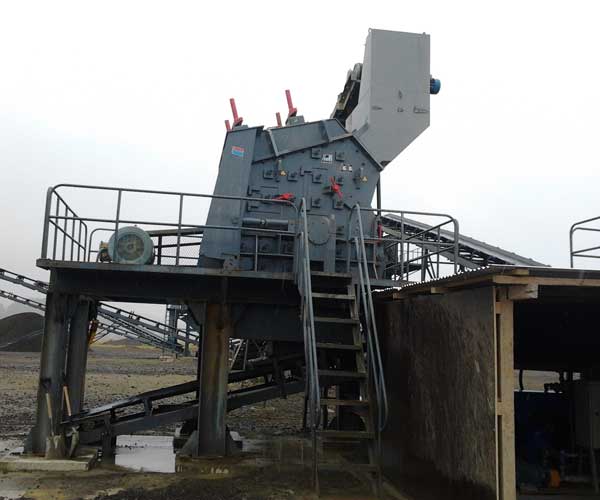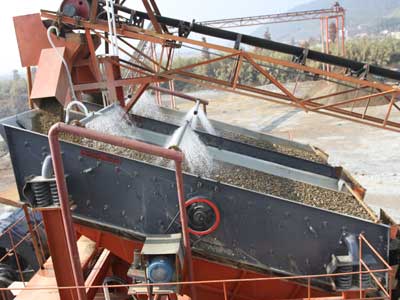
A sand crusher, also known as a sand making machine or sand mill, is a specialized piece of equipment designed to crush and reshape various types of raw materials, such as rocks, stones, and other minerals, into finer particles suitable for use as sand and aggregate.
24 Online Service

Aggregate, a fundamental component in construction, is a broad term for coarse particulate materials like sand, gravel, crushed stone, slag, and recycled concrete, used in various construction applications. These materials play a vital role in providing strength, stability, and durability to structures. As the construction industry continues to grow, the demand for high-quality aggregate has increased.
There are several types of crushers used for aggregate production, each catering to specific needs and operational conditions. The most common types include:
Jaw Crushers: Jaw crushers are primary crushers that use compression force to break down large rocks into smaller, more manageable sizes.
These crushers are highly versatile and can handle a wide variety of materials, making them a popular choice for aggregate production. The output size can be adjusted by changing the jaw plates, allowing for the production of different-sized aggregate.
Cone Crushers: Cone crushers are secondary or tertiary crushers that employ a rotating cone (mantle) inside a concave bowl to crush materials.
These machines are particularly effective for crushing hard and abrasive rocks, making them suitable for producing high-quality aggregate. The size of the output can be adjusted by changing the gap between the mantle and the concave.
Impact Crushers: Impact crushers, available in both horizontal shaft impact (HSI) and vertical shaft impact (VSI) configurations, use the force of impact to break materials into smaller particles.
HSI crushers employ a horizontal rotor that propels materials into a series of impact hammers or curtains, while VSI crushers use a high-speed rotor to throw materials against an impact wall or anvil. Both types of impact crushers are known for producing well-shaped and high-quality aggregate, suitable for various construction applications.
Gyratory Crushers: Gyratory crushers are primary crushers that use a gyrating cone-shaped head inside a concave bowl to crush materials. These crushers can handle extremely hard and abrasive rocks, making them suitable for aggregate production in large-scale mining and quarrying operations. Gyratory crushers can produce a wide range of aggregate sizes, depending on the desired output and the crusher settings.
VSI Crushers: The B Series Sand Maker is a cutting-edge piece of machinery that has revolutionized the way construction companies approach sand production. The B Series Sand Maker is a machine that produces high-quality sand for a variety of construction applications.
The construction industry relies heavily on sand and aggregate to create strong, durable, and long-lasting structures. As the demand for natural sand continues to grow and concerns over its depletion and environmental impact arise, the need for alternative sources of sand and aggregate becomes increasingly important. One such alternative is manufactured sand and aggregate, produced by crushing rocks and other raw materials.
The production of manufactured sand and aggregate from crushing rocks involves several stages, including:
The use of manufactured sand and aggregate offers several advantages over natural sand and aggregate, including:

In the world of construction, sand and aggregate play a crucial role in creating strong and durable structures. The demand for high-quality sand has been on a steady rise as the construction industry expands, and the need for sustainable and efficient materials becomes increasingly important. This is where sand crushers come in, providing a viable solution to produce high-quality sand and aggregate for a wide range of construction applications.
These machines employ a combination of compression, impact, and attrition forces to break down the materials, resulting in consistent and high-quality sand that meets the specific requirements of construction projects.
There are several types of sand crushers, each catering to specific needs and operational conditions. The most common types include:
The choice of a suitable sand crusher depends on several factors, including the type and hardness of the raw materials, the desired size and shape of the final product, and the production capacity required. It is essential to consider the specific requirements of the construction project and consult with experts to select the right type of sand crusher. Some projects may even require a combination of different crushers to achieve the desired outcome.
Sand, a key ingredient in construction and various industrial applications, is produced in different types to meet specific needs. Crushers play a crucial role in the process of creating these diverse sand types, transforming raw materials into the desired consistency and granular size.
At their core, crushers are machines designed to reduce the size of large materials, such as rocks or minerals, into smaller particles. There are several types of crushers, including jaw crushers, impact crushers, cone crushers, and hammer crushers. Each type operates differently, utilizing various crushing mechanisms to achieve the desired size reduction.

Jaw crushers are commonly used for the initial size reduction of raw materials. They consist of two jaw plates, one fixed and one movable, which come together to create a crushing chamber. The material is fed into the chamber, and as the movable jaw plate moves, it exerts a compressive force on the material, causing it to break into smaller particles.
Jaw crushers are highly effective in producing coarse sand with particle sizes ranging from 5 mm to 20 mm. These particles can be used in applications such as road construction, concrete production, and landscaping.

Impact crushers employ high-speed impact forces to break down materials. These crushers consist of a rotor fitted with hammers, which rotates at high speed within a crushing chamber. As the material enters the chamber, it is struck by the hammers and flung against impact plates, causing it to shatter into smaller particles.
Impact crushers are effective in producing medium-sized sand particles, ranging from 0.5 mm to 5 mm in size. This type of sand is ideal for use in concrete production, plastering, and masonry work.

Cone crushers utilize a conical-shaped crushing chamber to break down materials. The chamber is lined with wear-resistant material, and the crushing action is achieved through the oscillating movement of a central cone. As the cone moves, it compresses the material against the chamber walls, reducing it in size.
Cone crushers excel at producing fine sand particles, typically with sizes ranging from 0.063 mm to 0.5 mm. Fine sand is commonly used in applications such as glass manufacturing, plastering, and as a filler material in paints and coatings.

VSI crushers use a series of rapidly rotating hammers to pulverize materials into ultra-fine particles. As the material enters the crusher, it is struck by the hammers and flung against the chamber walls, where it is further broken down by impact and attrition forces.
VSI crushers are adept at producing ultra-fine sand particles, with sizes below 0.063 mm. This type of sand is useful for applications such as water filtration, chemical manufacturing, and as a filler material in various industries.

After the initial crushing process, screening plays a crucial role in producing different types of sand. The crushed material is passed through vibrating screens or sifters, which separate the particles based on their size. By using screens with different mesh sizes, it is possible to create sand with the desired particle size distribution for various applications.

In addition to crushing and screening, washers and classifiers are employed to enhance the quality of the sand. Washers remove impurities, such as silt and clay.

The construction industry is continuously evolving, with an increasing focus on sustainability, efficiency, and the use of high-quality materials. Sand and aggregate are critical components of the construction process, playing a vital role in creating strong, durable, and long-lasting structures. Sand crushers have emerged as a key player in meeting the growing demand for high-quality sand and aggregate, with their ability to transform raw materials into valuable resources.
High-quality sand and aggregate are essential for the construction industry due to their numerous benefits, including:
Sand crushers play a crucial role in the production of high-quality sand and aggregate by crushing and reshaping various types of raw materials. Their benefits and contributions to the construction industry are manifold:
Sand crushers are utilized in various construction applications, including:
Our Projects
Copyright © ZENITH, All Right Reserved.
